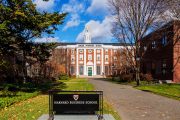
Koenig goes on to chronicle some of the present Oval Office occupant’s more cronyish connections:
During the 2008 election cycle, Obama raised a record-breaking $745 million, with some of his largest campaign contributions streaming from Google, Microsoft, General Electric, WilmerHale, and Goldman Sachs. Indeed, Obama’s top 20 donors doled out $13,382,825 in 2008, more than three times the $4,034,622 contributed by John McCain’s top 20 donors.
With those names and numbers in mind, the idea of a “Government-Sachs Conspiracy” doesn’t seem so far-fetched.
Consider, also, this related story reported late last year from a respected news source — Reuters:
What on earth did Hank Paulson think his job was in the summer of 2008? As far as most of us were concerned, he was secretary of the US Treasury, answerable to the US people and to the president. But at the same time, in secret meetings, Paulson was hanging out with his old Goldman Sachs buddies, giving them invaluable information about what he was thinking in his new job.
Goldman Sachs isn’t the only mega-corp with a sweet spot on the government gravy train. Agri-giant Monsanto is right there with them, according to the tale told in this story:
The Obama administration is now blocking a Freedom of Information Act (FOIA) request filed by an environmental group, Public Employees for Environment Responsibility (PEER), which is attempting to uncover Obama’s connections to Monsanto-linked lobbyists.
The piece goes on to reveal that PEER “suspects the Obama White House of working with these lobbyists to defend genetically engineered (GE) crops and the attempts to get these GE crops planted in wildlife refuges across the United States.
Some of the information which is currently being withheld by the Obama administration is part of an email from January 2011 from a lobbyist to a top White House policy analyst.
Even after reading of those arrangements, the far-too-cozy-for-comfort relationship between Wall Street and Washington is deeper and wider than most Americans would imagine.
Very convincing evidence of the head-shaking number of roots and branches of this corporate-government family tree was provided in a recent piece published by the website geke.us. In series of Venn diagrams, the Geke.us exposes just how much co-mingling of human resources is going on between government and corporate America.
Broken down into 18 separate categories, these illustrations seem to leave no stone unturned when it comes to shining the bright light of publicity on the often shadowy sharing of personnel between the federal government and the supposedly free market.
The first of the diagrams lists the multiple past and present commonalities between government and global investment and securities firm Goldman Sachs. A few of the more notable are listed below:
- Robert Rubin — former Co-Chairman of Goldman Sachs and former Treasury Secretary in the Clinton administration
- Jon Corzine — former Chairman and CEO of Goldman Sachs and former Governor and Senator from New Jersey
- Gregory Craig — former Chief Counsel for Goldman Sachs and former Obama White House Counsel.
Next up in this daunting roster is the relationships between Monsanto and the palaces of power on the Potomac. Again, as with the Goldman Sachs list, this one is long and impressive, as well, so only a handful of the most memorable are reprinted here:
- Mickey Kantor — Member of the Board of Directors of Monsanto and Secretary of Commerce under Bill Clinton.
- Linda Fisher — Vice President of Government and International Affairs for Monsanto and Deputy Administrator of the Environmental Protection Agency under Presidents Clinton and Bush.
- Hillary Clinton — former counsel for Monsanto and current Secretary of State.
The pharmaceutical industry’s interests are well-represented in Washington, as well, and vice-versa. Take for example some of the significant sharing going on between big pharma and D.C.:
- Catherine P. Bennett — worked for 26 years as Pfizer’s Vice President of Government Relations and was on the National Security Council at the Gerald Ford White House.
- Desiree Filippone — former VP of International and Government Affairs for Eli Lilly and Senior Policy Advisor to Senator Evan Bayh (D-Indiana).
- Jeffrey Kindler — former CEO of Pfizer and member of the Board of Directors of the New York Federal Reserve Bank.
- James P. Schlicht — former VP of Government Affairs for AstraZeneca Pharmaceuticals, Manager of Government Relations for Bristo-Myers Squibb and Budget Specialist for the Office of Management and Budget.
Next up on geke.us’s roster of those swinging through the government/corporate revolving door is “Big Oil.” The following is a mere sampling of the fuller and more frightening list provided in the Geke diagrams.
- Andrew Zausner — former Director of Government Relations for Pennzoil and Carter Administration Department of Energy Official.
- Theresa M. Fariello — Vice President of Government Relations for ExxonMobil, Vice President International Relations for Occidental Petroleum and Deputy Assistant Secretary for International Affairs at the Department of Energy during the Bill Clinton administration.
- Steven E. Koonin — Chief Scientist for British Petroleum (BP) and Under Secretary of Energy for Science for the Obama Department of Energy.
While the foregoing evidence of cronyism is certainly persuasive, it is only made all the more convincing when the defense contractor connections are factored into the mix. Consider these double-dippers:
- Togo West — former Vice President of Government Relations for Northrop Grumman and Secretary of the Army and Secretary of Veteran Affairs under Bill Clinton.
- David Morrison — VP of Government Operations for Boeing and Associate Director of the Office of Management and Budget during the Clinton administration.
- William Lynn III — Senior Vice President of Government Operations for Raytheon, the world’s largest producer of guided missiles, and Deputy Secretary of Defense for over two years during the presidency of Barack Obama.
The list goes on and on, literally. And it isn’t just geke.us that has been keeping close tabs on all the swapping, either. Pull up the “Revolving Door” tab on the opensecrets.org website for a comprehensive cataloging of the résumés of many industry heavyweights who got their training sparring on Capitol Hill and the White House.
Finally, there may be those who question why all this overlap between business and government should concern citizens. After all, they might say, doesn’t it make sense that major corporations should try to take advantage of the contacts made by former government employees? Of course they should. The more salient and serious issue is, however, whether these industries who have such an incalculable influence on the economy of the United States (and the world) are wielding the power, prestige, and access afforded them by their Capitol-connected employees for the good of the nation or rather merely to provide themselves with an impenetrable shroud of secrecy for their many global goings-on.
Photo: Former Treasury Secretary Robert Rubin campaigning with Democratic presidential candidate, then-Sen. Barack Obama: AP Images




